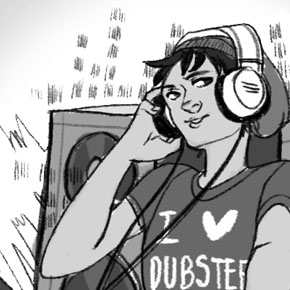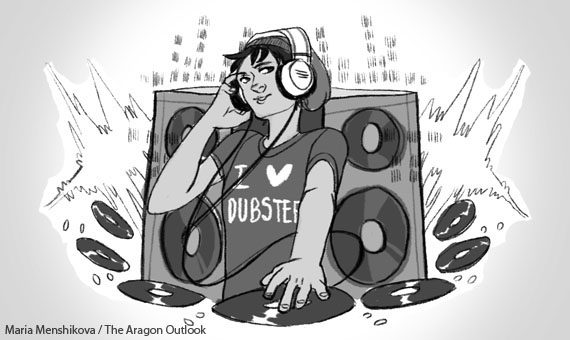
It pulses. It shakes. There is something evocative and unique about its unorthodox melodies. “It’s different,” says Junior David Leong. “That’s what people like. It’s not your average love song.” This type of music that utilizes distinctly warped electronic sounds and a heavy bass is known as dubstep, and it has grown into one of the most recognizable sounds of the current music scene.
Dubstep’s distinctive beats have found their way into a variety of musical genres. “I’m not sure if it’s mainstream everywhere, but it is in hip hop. It’s becoming mainstream in that. Many dancers use it, and K-pop (Korean pop) artists are starting to use it too” says senior dance team member Mickey Alvarez.
Dubstep has come far from its roots in the 1990s United Kingdom grime movement. Although now a distinct genre, Dubstep has retained some essential properties from the dark and eclectic UK grime electronica from which it evolved. It maintains the grime’s 140 beat per minute standard and it’s wobbly, warped character.
Dubstep’s typical style centers on its base effect and limited vocals. “Beats, bass, lots of bass” says senior Casey Fitzgerald when asked to describe dubstep’s defining characteristic. Dubstep’s rhythm centers on this base effect. Dubstep songs will commonly have a soft, dreamy melody created by electronic sounds that will abruptly reach the “drop” and suddenly the intensity of the song will escalate.
“It’s like an electric fart,” says Alvarez. “Most of the dubstep people make sounds like that. There is some musicality in it, but most of the time it sounds like an electric fart.” Alvarez refers to dubstep’s tendency to blend electronic sounds together and use huge, explosive melodies.
Leong has changed his original opinions about dubstep. He says “At first I was like, this is crazy. Now I’m like, it’s really, really cool.” Dubstep’s conglomeration of potent effects has allowed it to become a power player in the music scene. Skrillex won the 2012 Grammy for Best Dance/Electronica album for “Nice Sprites and Scary Monsters,” a popular song that appears on many radio stations.
Band Director Troy Davis listened to “Nice Sprites and Scary Monsters” and gathered his first impression of dubstep. “It sounds almost like something from a video game or a movie,” says Davis.
Davis does not believe that dubstep is really a mainstream appeal at the moment, but he adds, “You’ll start hearing it in other fields…these new effects are integrated into the groove; it’s something not really used this way before.”
Indeed, although dubstep is usually integrated into dance melodies, it has shown itself in a variety of alternative acts like Muse and Alex Clare. Alex Clare’s “Too Close” has been a popular radio hit as well as the background song to Internet Explorer’s commercial, played extensively during NBC’s coverage of the Olympics. Muse’s new album “The Second Law” features songs that use dubstep effects. This is a surprising testament to the versatility of dubstep as dubstep is not typically associated with lyrical music and because Muse created some of these dubstep sounds with the use of a guitar instead of electronic effects.
“I never thought it would hit mainstream,” says Senior Steven Callas. In reality, dubstep has shown certain signs of becoming a part of mainstream music. This development may be attributed to some of dubstep’s defining characteristics, like the focus on base and its use of unique electronic sounds.
Fitzgerald agrees, “Dubstep puts more beats and rhythm to songs instead of just lyrics.”
Dubstep’s heavy and powerful use of bass may explain its quick rise to popularity and its promise on the dance floor. With heavy vibrations that can be felt by a dancer, dubstep has started appearing in many dance events. Alvarez says “The best time to listen to dubstep is with a crowd of people. It’s like a rave type of music.”
Alvarez explains how dubstep helps him explore other types of dancing. He says “For instance, waving and botting. The reason is that the beats have that sound effect, like a wave or robot.”
Dubstep’s emerging influences on the dance scene and its versatility in different musical genres have given it a solid base to grow and become a true staple of mainstream music.




